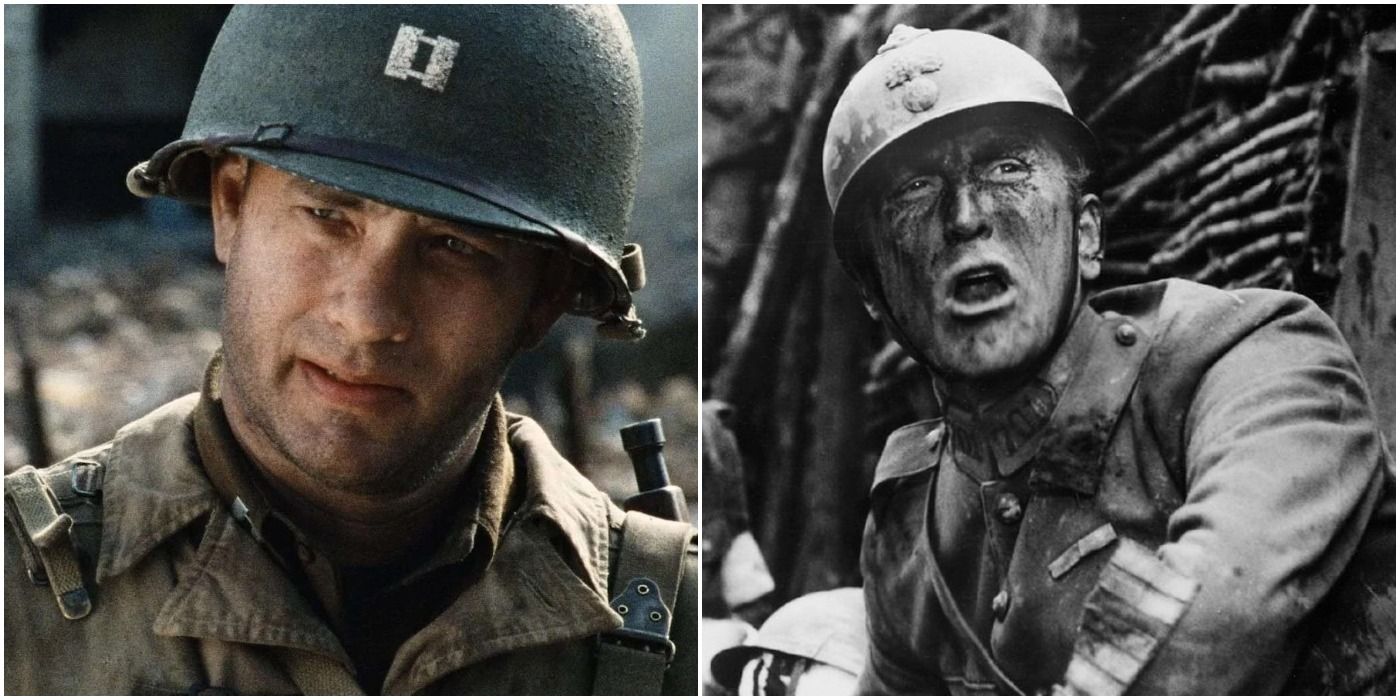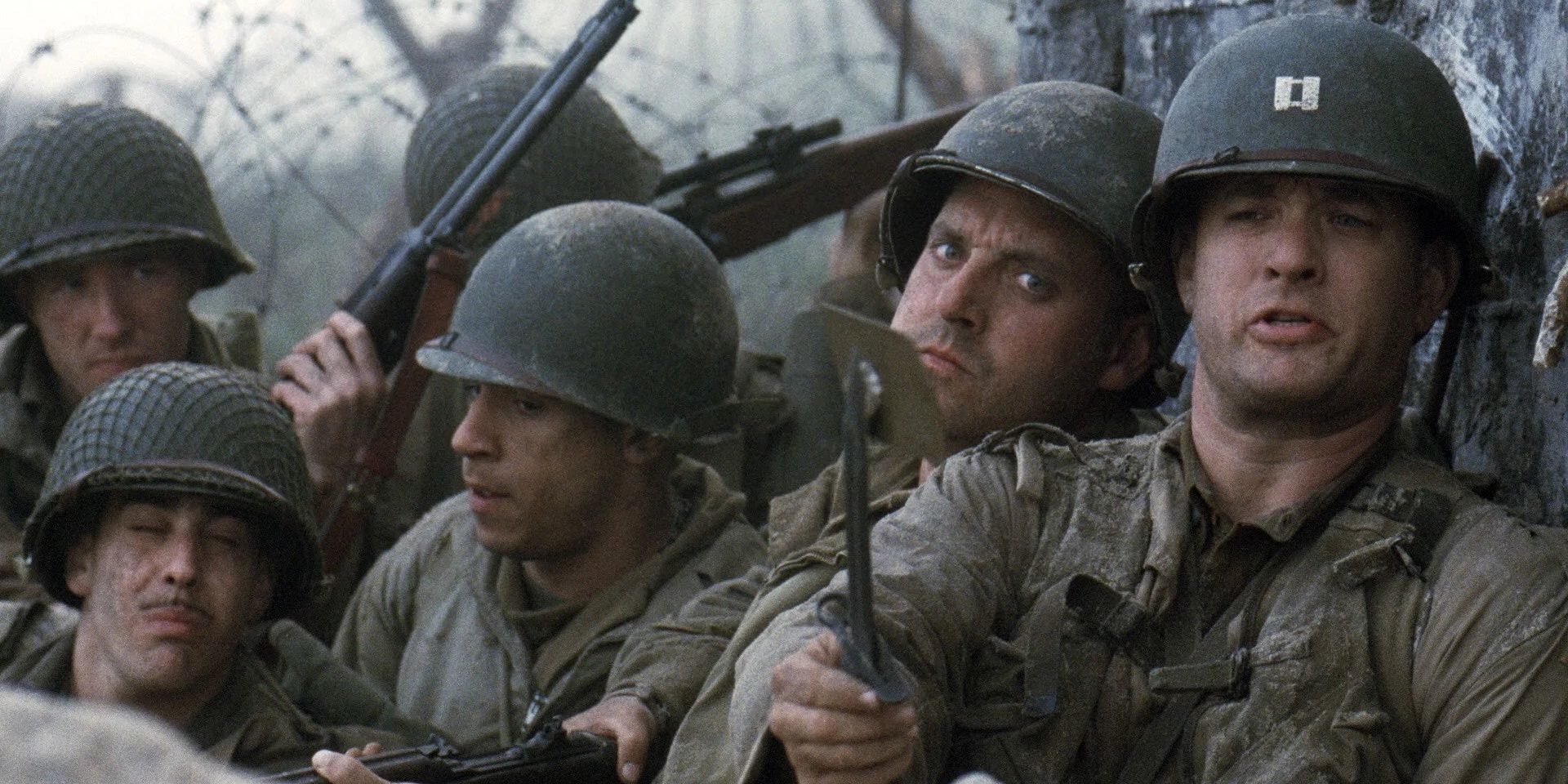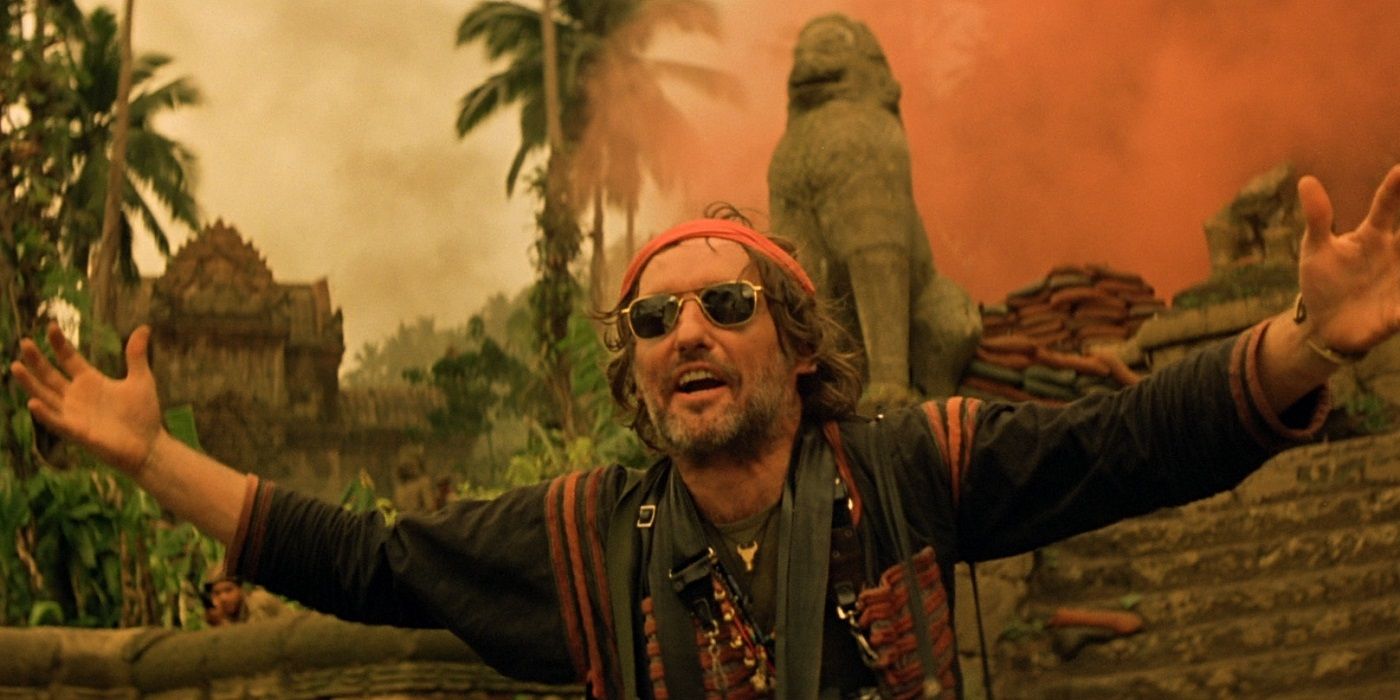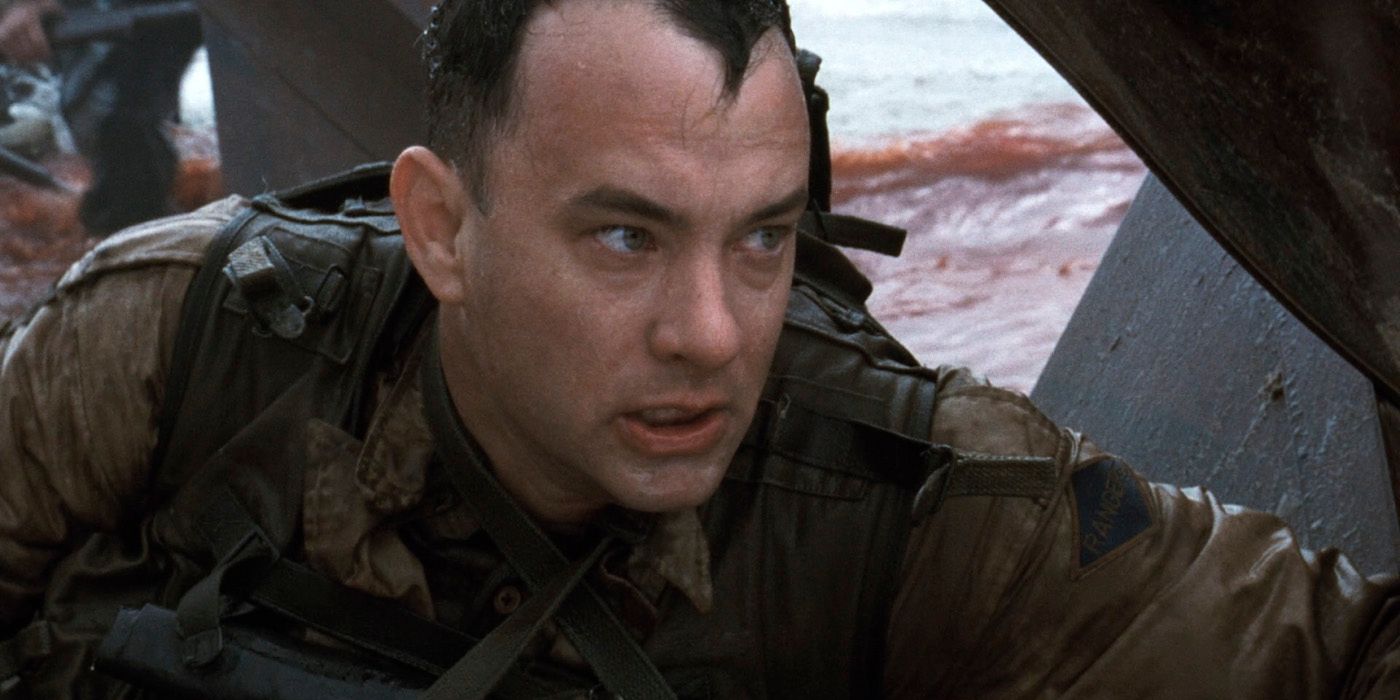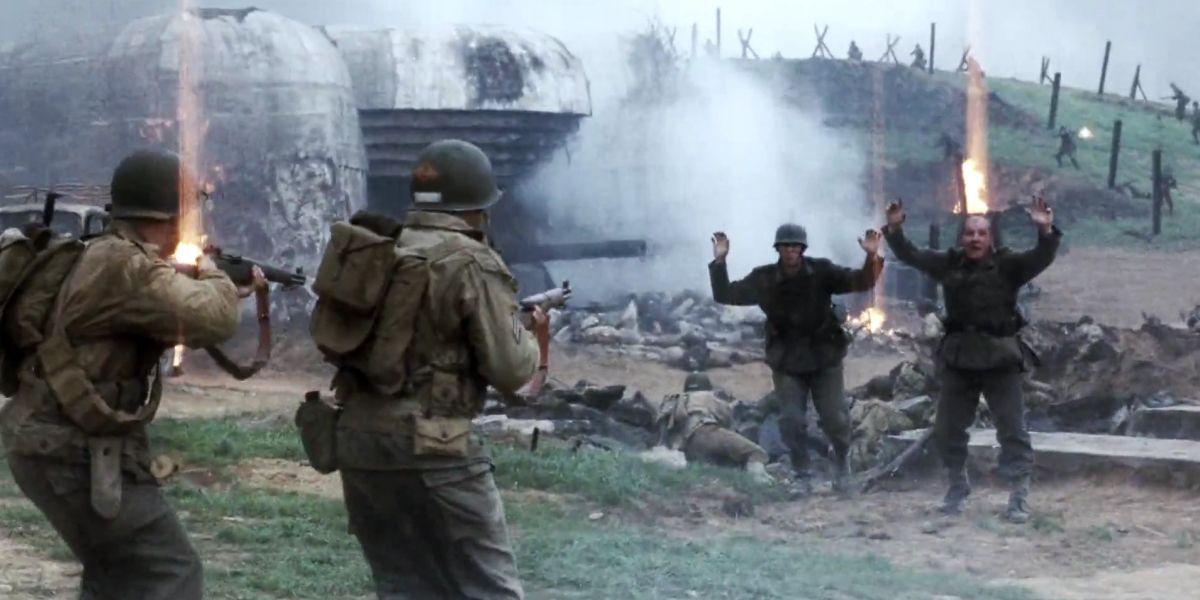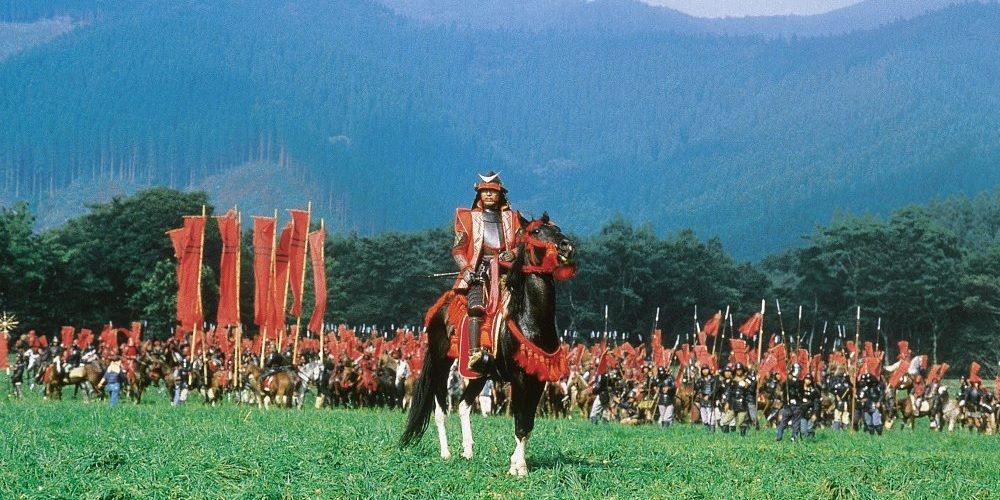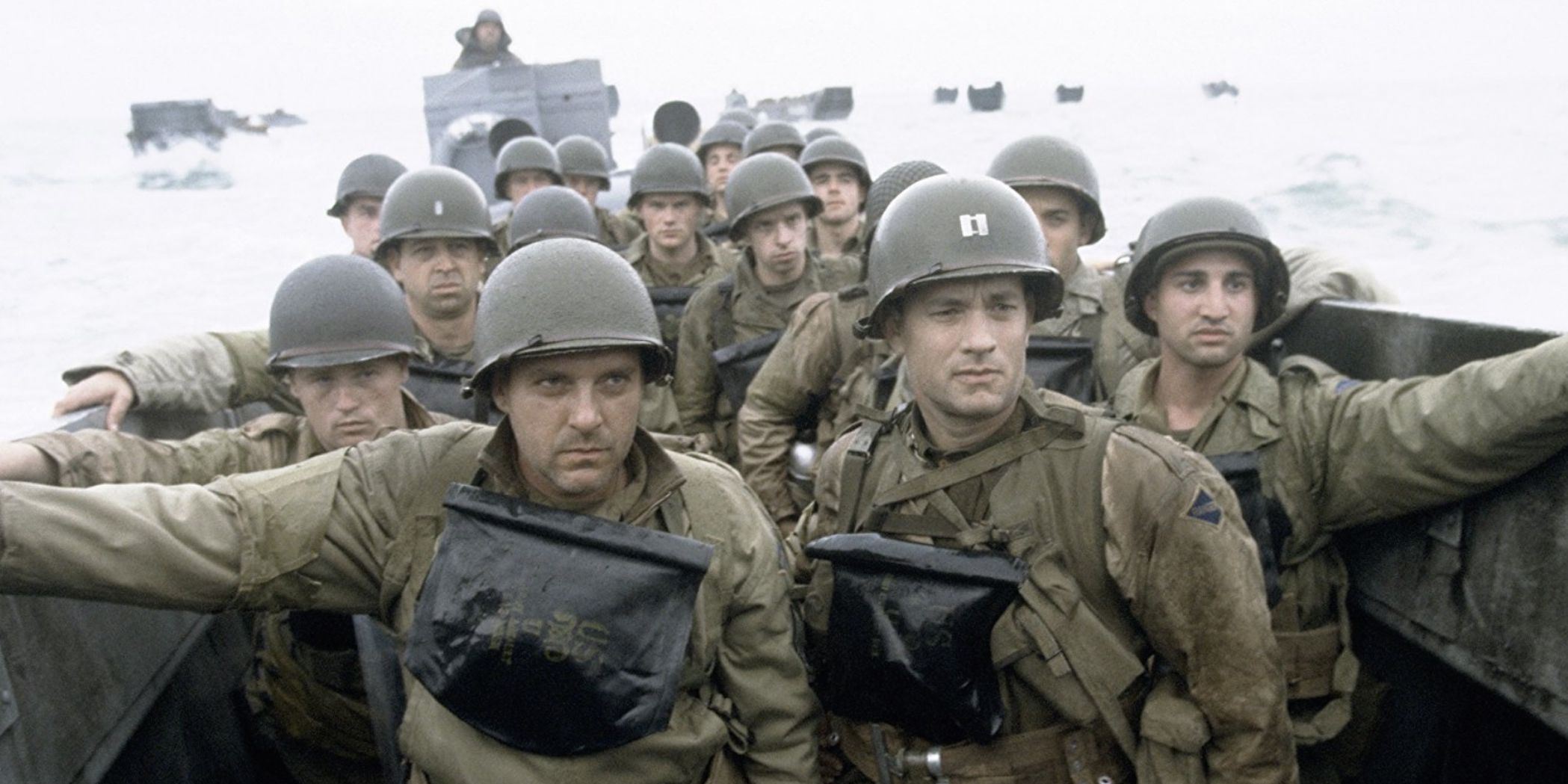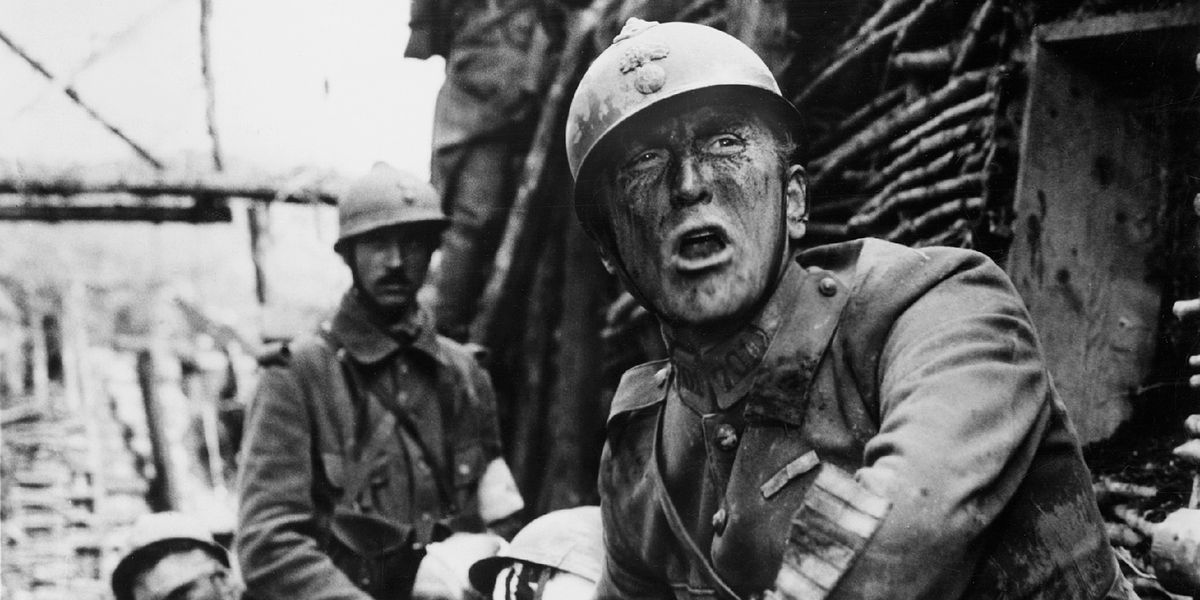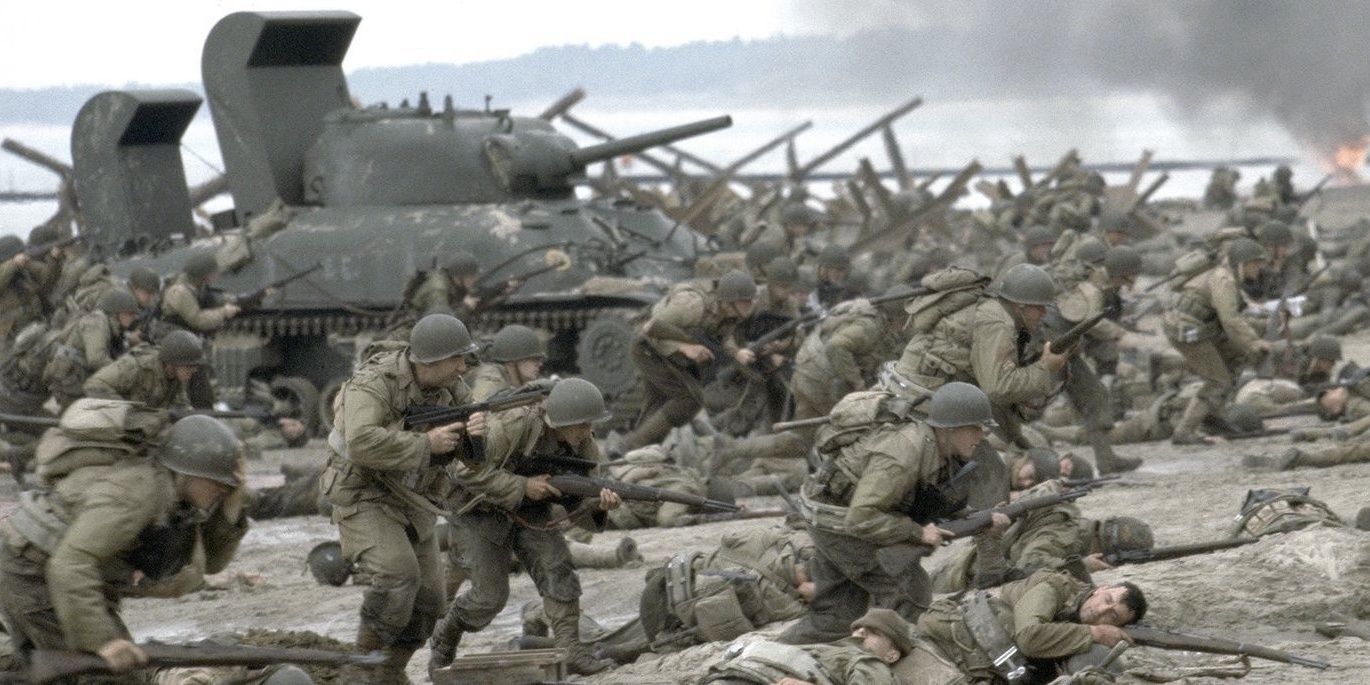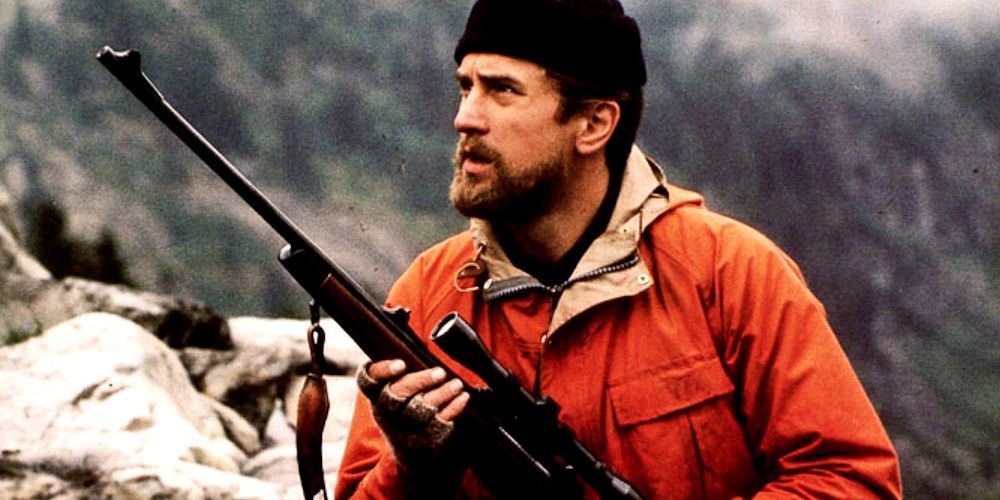Pretty much every great filmmaker has tried their hand at a war movie at some point throughout their career, so there have been some true masterpieces in the war genre over the years. The horrors of war and the camaraderie of soldiers present filmmakers with plenty of opportunities to explore the human condition.
Steven Spielberg’s Saving Private Ryan is arguably the crowning achievement of the genre. It’s a quintessential war story, beautifully acted and breathtakingly shot, taking the historical tragedies at play seriously. But of course, it’s got some stiff competition in a genre filled with contributions by masterful directors.
Saving Private Ryan Is The Best: The Soldiers Feel Like Real People
Lazily made war movies fail to dig into the truly unimaginable terror of going to war. And worse than that, war movies that revel in the “glory” of war depict soldiers as nationalist portraits, fearlessly charging into battle, guns blazing. But in Saving Private Ryan, the soldiers feel like real people.
As they head to the beaches of Normandy in the D-Day landings, they’re terrified. We’re introduced to Captain Miller via his shaking hands. He’s just a regular guy — a school teacher — faced with insurmountable odds.
Closest Contender: Apocalypse Now
After politically active screenwriter John Milius wrote Apocalypse Now as a defining treatise about the Vietnam War, Francis Ford Coppola took the cast and crew deep into the jungles of actual warzones, where chaos reigned as they went over budget and over schedule.
The result is a veritable masterpiece; a surreal odyssey through the drug-fueled terror of ‘Nam, vaguely following the structure of Joseph Conrad’s Heart of Darkness. Some cuts of the movie are better than others, but they’re all pretty terrific.
Saving Private Ryan Is The Best: Tom Hanks Is The Ultimate Everyman
Most viewers going into war movies won’t have experienced war, which makes it tough to put the audience in the characters’ shoes.
In the case of Saving Private Ryan, that’s where Tom Hanks comes in. He is the ultimate everyman; any viewer can see themselves in his relatable performances.
Closest Contender: The Hurt Locker
While great movies were being made about World War II during World War II and great movies were being made about the Vietnam War during the Vietnam War, contemporary filmmakers have struggled to capture the Iraq War on the big screen. One startling masterpiece of the war movie has come out of it, though: Kathryn Bigelow’s The Hurt Locker.
The distinction that makes the movie stand out is its script, written by Mark Boal, perhaps the only screenwriter of a war movie who has actually been in a warzone; he was embedded in Iraq as a journalist and drew on those experiences to construct The Hurt Locker’s brilliant episodic screenplay.
Saving Private Ryan Is The Best: There’s Good And Bad On Both Sides
Most war movies sanitize their conflicts with a clear-cut black-and-white view of the morality of each side. This is the propagandic John Wayne brand of war movie, and it’s very reductive and narrow-minded.
In Saving Private Ryan, there’s good and bad on both sides. The heroes of the story are American troops, but in the same movie, a couple of German soldiers trying to surrender are shot dead on the spot by Americans.
Closest Contender: Ran
Akira Kurosawa’s Ran, an adaptation of Shakespeare’s King Lear, takes place in medieval Japan, but it could take place in any country during any time period, because its themes are universal and timeless.
It’s about a warlord at the end of his life, naively assuming that he has any control over the next generation and getting a very rude awakening. Ran’s battle sequences are even more cinematic than the ones in The Lord of the Rings, while every frame is bursting with vibrant colors.
Saving Private Ryan Is The Best: It’s More Accurate Than The Average War Movie
In broad strokes, Saving Private Ryan isn’t very accurate, because it’s totally implausible that an entire platoon of soldiers would be sent to rescue a single private. But the devil is in the detail.
The opening D-Day sequence captured the terror of the operation so perfectly that it triggered PTSD attacks in actual veterans who were on the beaches.
Closest Contender: Paths Of Glory
If it’s not quite the greatest war movie ever made, Stanley Kubrick’s Paths of Glory is certainly the greatest anti-war movie ever made. Kirk Douglas stars as Colonel Dax, who is court-martialed when he refuses an order to send his men on a suicide mission.
Three soldiers are faced with execution by firing squad to teach everyone else a lesson in this harrowing tale of an individual taking on a bureaucratic institution.
Saving Private Ryan Is The Best: It Captures The Intensity Of War
Spielberg worked closely with cinematographer Janusz Kamiński to ensure that Saving Private Ryan wouldn’t feel like a big, flashy Technicolor spectacle like so many classic WWII epics, which can distance the audience from the shocking realities of the subject matter.
Instead, they wanted the movie to feel like a colorized 1940s newsreel, with gritty, realistic visuals and a desaturated palette. They also emulated Douglas Milsome’s trick from Full Metal Jacket, throwing the camera’s shutter off sync to capture the intensity of the battle scenes.
Closest Contender: The Deer Hunter
Michael Cimino’s emotionally devastating masterpiece The Deer Hunter captures the true horror of the Vietnam War despite only spending around half an hour of its three-hour runtime in the actual conflict.
The beginning of the movie sets up three regular small-town guys working honest jobs who are drafted to fight. When they return from war (or, in one case, don’t return), they’re all permanently scarred from their experiences in different, but equally harrowing ways.

